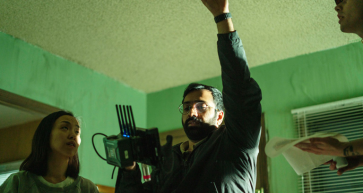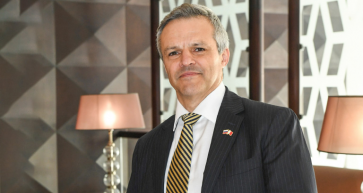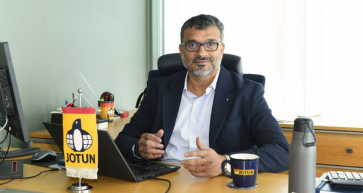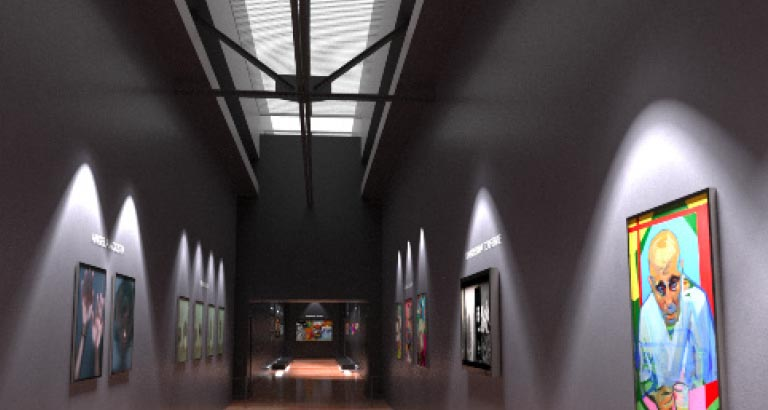
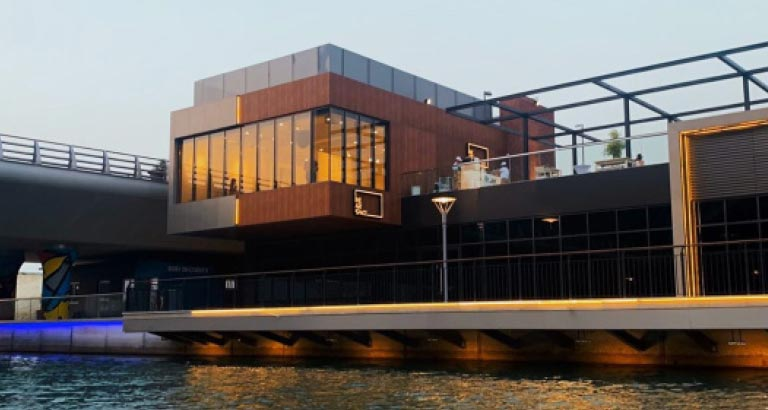
Last month, the first ever Virtual Reality (VR) mental health art exhibition entitled ‘Safer Spaces’ was launched in the Kingdom of Bahrain by The Art Space, located in Bahrain Bay. The collective consciousness art exhibition aimed to normalise and spark conversation around the topic of mental health in the Arab world. It featured a phenomenal collection of 70 artworks created by 19 emerging artists based in the GCC.
BTM caught up with the founder and Managing Director of the Art Space, Esra Faraj, and Safer Spaces’ curator and participating artist, Zayn Al Qahtani, to find out more.
How did you pick the artists who showcased their work during the exhibition?
ZQ: We dove into the exhibition with the mindset to do two things: promote emerging artists based in the Middle East, and display work that truly had enigmatic, communicative qualities when it came to Mental Health. We didn’t have a goal number of artists and just went into it with an open mind. We decided the final 19 collectively by featuring call-outs via social media (which received hundreds of applicants) and consecutively putting each work through the critique of The Art Space’s curatorial panel.
Could you tell us more about some of the Bahraini artists that were featured?
ZQ: We have a wonderful variety of Bahraini artists exhibiting at Safer Spaces. From first-time exhibitors to more seasoned emerging artists, to self-taught artists and ones who have gone on to international studies - the show runs the whole gamut of bountiful perspectives and intimate experiences that the contemporary Bahraini art scene has to offer.
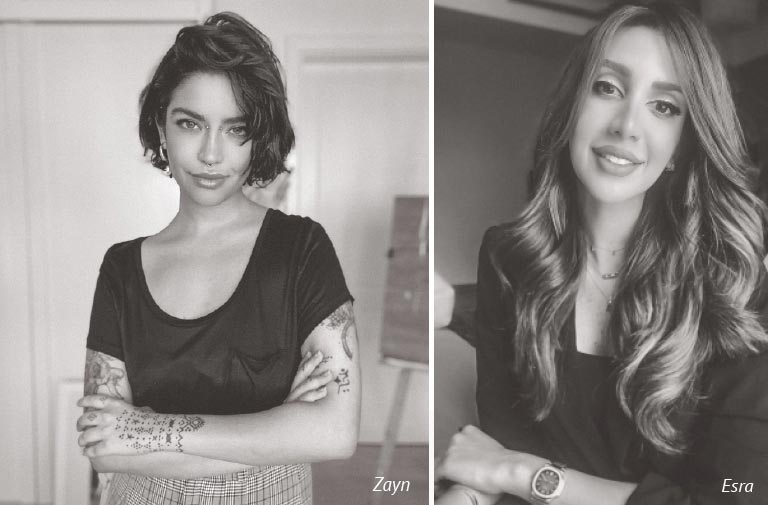 What led to your decision to center the exhibition on the subject of mental health?
What led to your decision to center the exhibition on the subject of mental health?
EF: Through our many discussions with emerging artists, a recurring topic close to everyone’s hearts surfaced: ‘How we can do our part to end the taboo around the conversation of Mental Health in the Middle East through Art?’. This gave me the drive to put together this exhibition. I believe the first step to overcoming such a complex issue is to acknowledge, discuss, and bring it to light. Only then can we see significant shifts in attitudes and creative solutions to such issues.
Zayn, how would you describe your art?
ZQ: I consider myself a figurative artist first and foremost – I love to use the human existence as a vessel to communicate various themes such as feminism, gender, contemporary culture, spirituality and alchemy. I am also a mixed media artist, so a lot of my work is multilayered with different processes and materials to achieve the final works.
Zayn, as an artist and curator of Safer Spaces, what is the outcome you were hoping to achieve?
ZQ: Safer Spaces is more than just an art exhibition – we wanted it to be a visual statement that everybody works through mental health issues every single day, and the more it is normalized the more healing is readily available and can take place. Our goal is to witness a significant shift in attitudes towards the conversation of mental health and brainstorming creative solutions to these issues.
What were the biggest challenges you encountered when planning the exhibition?
EF: The technicalities behind building and developing a virtual art gallery tour was quite the challenge in the beginning. Everyone involved basically had to take a learn-as-we-go crash course in web development - rendering timings, software limitations, the heaviness of the files on the speed of the show - it was very “pick up and improve as we go along”. Fortunately, though, we feel like getting through this learning curve has made us much more adept at handling virtual feats in the future.
As the organizers of a virtual reality art exhibition, do you think there’s a possibility of the concept growing while the world faces the challenges of the coronavirus?
EF & ZQ: Definitely! We feel that in such a fast-paced world it’s important for a gallery to be adaptable with the times, and our delving into technology is one way we’ve managed to communicate the art gallery experience to everyone locked down in their homes across the region. It’s only natural for technology and the global climate to evolve, so naturally, so must we. It’s always exciting to see how we can overcome these detours and bring our mission to light.
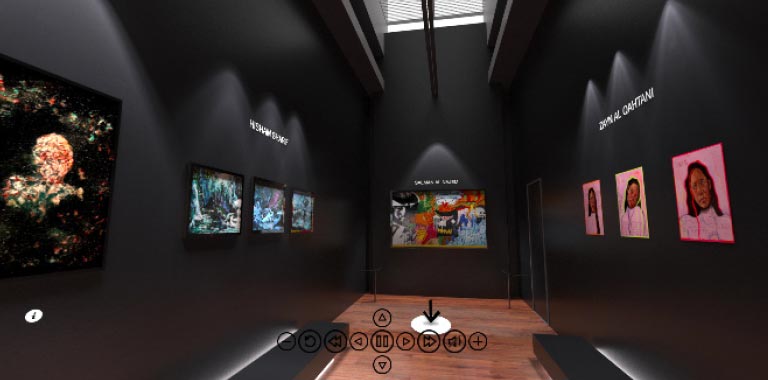 Esra, could you tell us more about The Art Space and its objectives?
Esra, could you tell us more about The Art Space and its objectives?
EF: The Art Space is a creative hub, digital platform and art gallery rooted in Bahrain Bay, a new location for art and luxury situated in the heart of Manama. We are dedicated to fostering the GCC’s diverse and dynamic creative community, and endeavor to support and promote the visual arts and contemporary culture of the Arab world.
A home for daring creativity and innovation, our vision is to create a space where ideas can merge and illuminate; a place for knowledge-sharing, celebration of contemporary culture and artistic practices. We are passionate about creating new and inspiring opportunities for artists and makers in the Gulf. By means of clever global-facing strategies and heartfelt dedication to our community, we aim to showcase our artists to the largest international audience possible.
Since October 2018, I have translated my love for the arts into various initiatives to discover, support and promote Visual Art and artists from the region. One of my main objectives at The Art Space, is to adopt creative young talents in the Gulf by further developing their vision into reality.
We aspire to create a communal space to champion artists from Bahrain and the GCC. I thrive to further advance the passion and knowledge of Art and Culture in the Gulf.
What are your thoughts on the art scene in Bahrain and the rest of the region?
EF: The art scene in Bahrain has always been abundant with masterful creatives and has a rich archive of local artists and works that are prominent in contemporary 20th and 21st century art culture. We also want to mention and vocally appreciate that Bahrain has an abundance of art history to reference from, and many multiple heritage sites that are considered architectural beauties in their own right.
The regional art scene has progressed dramatically over the past number of years and it is a very exciting time to be an artist or a gallery in the region at this moment in time. The millennial influence on the art world is undoubtedly a game changer and we can’t wait to see and actively participate in how the art culture here keeps evolving.
What can the community do to support artists in the region?
EF: The easiest ways to support regional artists is to follow their social media, share their profiles with people who might like them, and help put their work out on the forefront so that it doesn’t get drowned by social media algorithms. This helps artists and galleries connect with potential clients.
The most impactful way to support artists and artisans in the region is to shop local. Instead of buying wholesale prints from a large, global company, purchase prints or originals from your favorite local artists – it’s a lot more personal and is giving back to an economy that is often overlooked. We’ve made sure to integrate an e-gallery into The Art Space website to support our artists and give their work the exposure they deserve – you can visit the shop and support your favorite artists at artspacebh.com/shop
Are there any other projects in the pipeline?
EF: We are always working on something new. For now, we are focusing on digital projects and attempting to push the boundaries of technology to deliver an art gallery experience.

